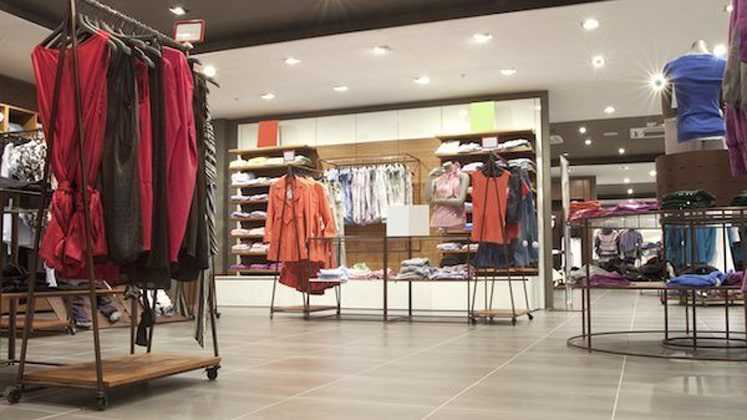
The fashion retail industry is ever changing and especially during the current times when the world is facing a pandemic. The market is changing, consumer shopping behaviour is changing, trends are changing and even the way retail brands used to sell is changing. There is a stiff competition amongst retailers – both offline and online – to stay relevant and foremost in customers’ minds and since consumer-centric business models have become a norm today, customer acquisition and retention strategies are more significant and important than ever before. These have become a strategic investment that no retail brand is ready to overlook.
“In the long run, customer acquisition is what has helped the brand grow and customer retention is what ensures that the brand’s foundation is strong enough for the growth to be exponential. From a customer retention standpoint, we wholeheartedly believe that it is important to stay engaged with our clients on a variety of subjects. We also put together extremely and carefully curated experiential events and invites are sent to all our clients that are part of the Sarah & Sandeep community. To ensure that clients are engaging with us on a consistent basis, we believe that the traditional methods are best and all consultants at the store are thereby advised to maintain a healthy professional communication with the clients to go over their wardrobe needs once every quarter,” asserts Sandeep Gonsalves, Co-founder and Director, Sarah & Sandeep .
Why though?
For brands, it spells the make-or-break strategy as it is critical for building customer loyalty and it can be accomplished in a variety of ways that are both cost-effective and long-term. On an average, attracting a new customer costs around five times as much as keeping an existing one and increasing customer retention rates by just 5 per cent increases profits by 25 per cent to 95 per cent.

Customer acquisition is meant to establish brand loyalty and repeat business while also helping brands have a large bank of customers in their database. This makes the brand attractive to investors and suppliers. Customer acquisition strategies help save marketing expenses since they let brands keep their old customers stay loyal to them. Loyal customers use a brand’s business regularly for purchases and ultimately tend to spend more money. They are 50 per cent more likely to buy new products and spend 33 per cent more than new customers.

The most cost-effective advertising a brand can have is word-of-mouth and it only comes from loyal, happy customers. According to stats also, people who are referred by a friend are 4x more likely to buy from a business, and 92 per cent of people trust recommendations from family and friends more than other forms of marketing. Also, loyal customers tend to get far less price-conscious than new customers since they value the brand already and are willing to pay the price for the services they receive. While relevant and time-sensitive customer acquisition strategies can help the brand in the long run, a lot has changed over the years and what was relevant few years back, may not be an adequate strategy right now. So, what really is working right now for fashion retail brands?
Also Read : Revolutionising the pants market with niche offering
What’s working?
The year 2020 has changed a lot for overall retail industry. With digital disruption and new generational influences, it’s gotten a lot more difficult for brands to hold onto customers and the industry is adapting to newer trends in order to win and retail customers.
Shreya TathaiGurnani, Co-founder & CEO, Postfold , says, “Customers are the most valuable asset for any brand, and customer acquisition is the key to growth of a brand as it helps you win new businesses, retain loyal customers and improve profits. We have built a community with our customer base and are always in touch with them. We have a very strong system of receiving feedback from our customers which constantly helps us grow and take product decisions. We have launched multiple loyalty programmes for our customers which include preview of sales before it’s launched on the website/ retail store or discount codes to the customers, who have spent the most on our website. Our strategies have allowed us to understand more about our customers and what they want which gives our brand a direction and we have been able to implement our findings to provide better prices and products to our customers.” Retail brands have also taken to expanding loyalty rewards to incorporate social and behavioural actions, which include referral rewards and points for user generated content.
Furthermore, customer acquisition forms an important tool for online retailers as well and more so, now with more and more consumers shopping online instead of going to offline stores due to the ongoing pandemic. Despite depressed consumer spending, economic slowdown and uncertainty, India’s e-commerce order volume increased by 36 per cent in the last quarter of 2020. According to IBEF, India e-commerce sector will reach US $ 99 billion by 2024, growing at a 27 per cent CAGR over 2019-24, with grocery and fashion/apparel likely to be the key drivers of incremental growth. With more consumers opting for online shopping, they are adopting new digital behaviour and brands are also restrategising to earn consumer loyalty on online mediums as well.
Sidhant Keshwani, Managing Director, Libas , avers, “Being in e-commerce, this is actually the best time (that we have seen since many years now). We are seeing a lot of new customers making their way to online now. Many of them who were previously hesitant to shop online or were not confident are now very comfortable on this platform. Hence for brands like us that are predominantly e-commerce led, it’s a good time to go out, express ourselves and capture those customers and make sure customer retention efforts are being undertaken. E-commerce is all about customer loyalty and we have to make sure there are repeats given that the marketplace is crowded and the competition is rising steadily. Apart from loyalty programmes to build consumer stickiness, brands like Libas will need to devise newer strategies to ensure that happens. This will have to run parallel with the product offering and quality. Consumers are picky nowadays. Quality has been one of our top focus areas when it comes to ensuring consumer retention. That has been our strong focus during COVID-19 and we will continue doing so in the future as well.”
While one may not be able to compete with fast or free shipping, lowest prices or limitless marketing budget, etc., what brands need to pay attention to is building a direct relationship with their consumer base. Shaan Shah, CEO, Freakins , maintains, “Whether one has thousands visiting their platforms for free or they are paid, how one retains their consumers is what is crucial. It is of prime importance to step up creating customer loyalty for every brand because loyalty and consumers work in tandem. Primarily, our marketing strategy has helped us understand our consumer base. Beyond that, I truly believe that getting the consumers’ consciousness should be at the forefront of all customer acquisition strategies. In order to retain one’s consumer base, one must upgrade their consumer experience constantly and find new ways to reduce friction in their e-commerce retail experience. We primarily focus on good logistics, easy returns and exchange, quicker refund and a more personalised approach in our social media content. Through our surveys, we have received a lot of positive feedback from our clients on social media which in turn strengthens the trust of our consumers, in our brand.”
Going forward
Customer acquisition is one of the most important techniques for getting customers to move down the marketing funnel from brand recognition to buying decisions. It is a single or a series of programmes aimed at increasing customer value and encouraging them to repurchase and spread the word about a company’s product or service. And regardless of the size of the business, it is an important aspect of running a business besides helping them churn profits.
It should also be noted that today’s customers are more inclined to brands that make an effort to keep them serviced and satisfied and they tend to remain loyal towards such brands. In a survey conducted in September 2020 regarding the importance of brand loyalty in India, consumers were asked whether trust is an important attribute when they choose a brand. For about 39 per cent of the respondents, trust is very important while the remaining 6 per cent of the respondents responded otherwise. It’s definitely not easy to always get it right when it comes to decoding ever changing customer behaviour, but the ultimate mantra that’s helping brands right now is putting the customers first and foremost.

Post a Comment